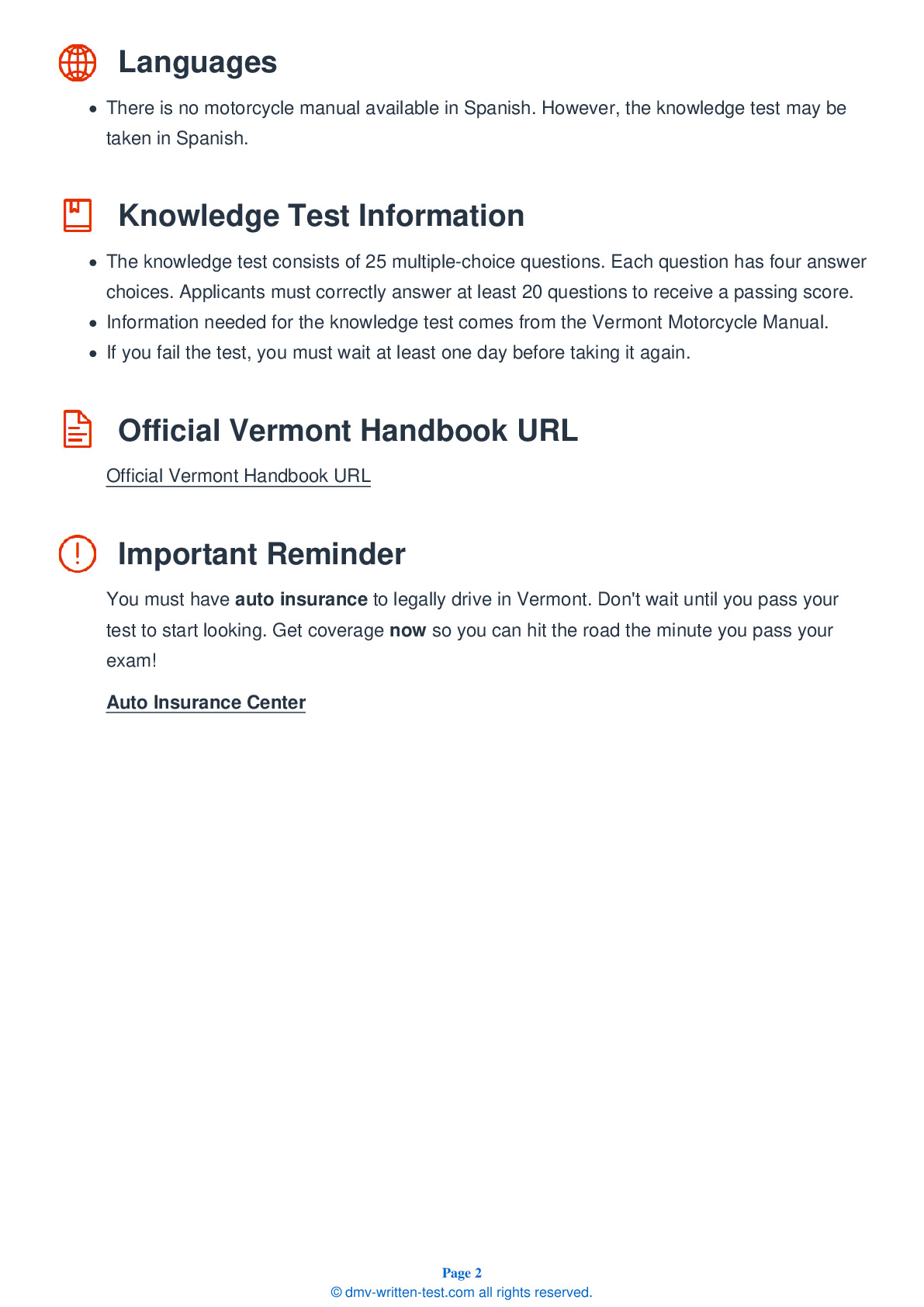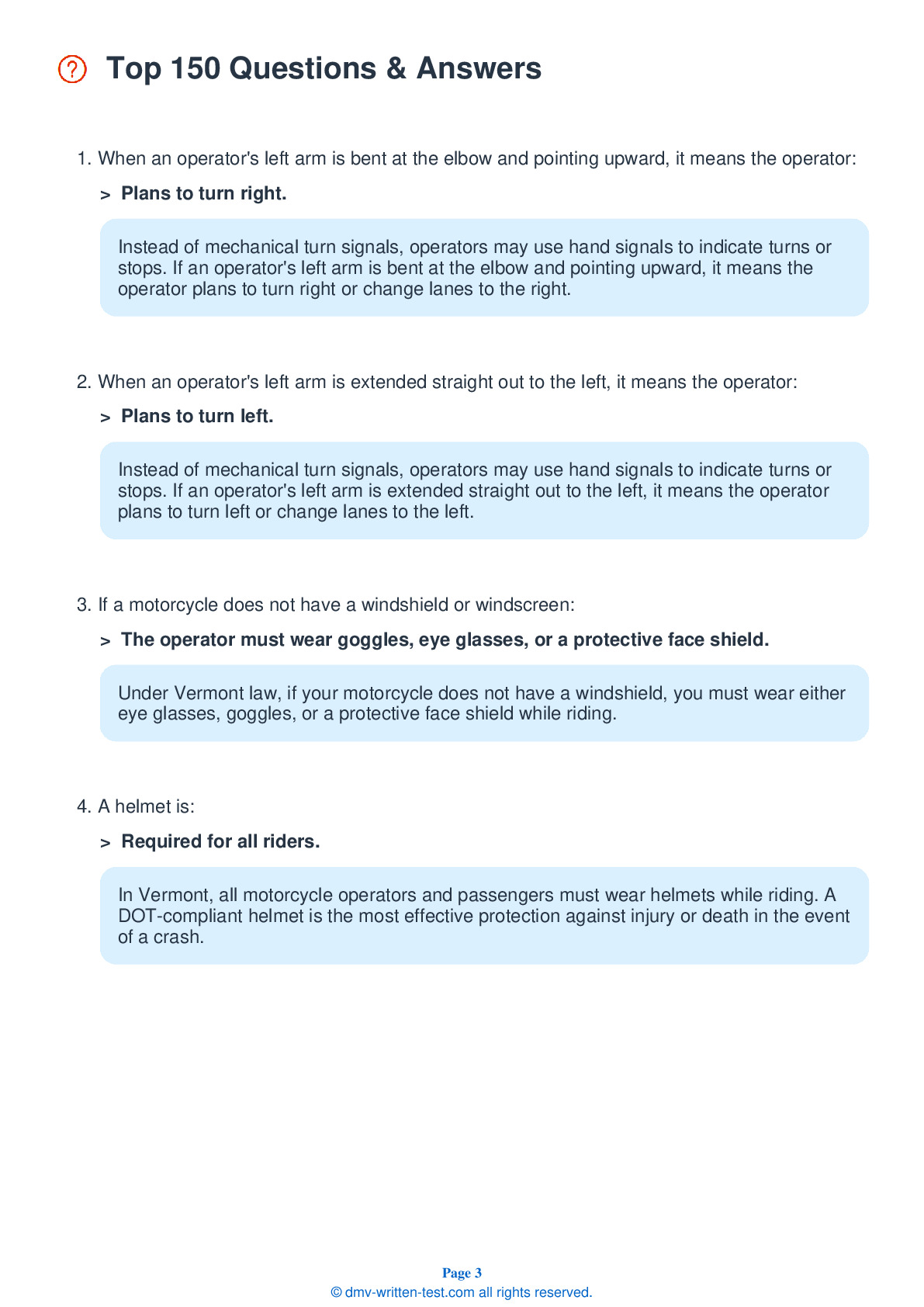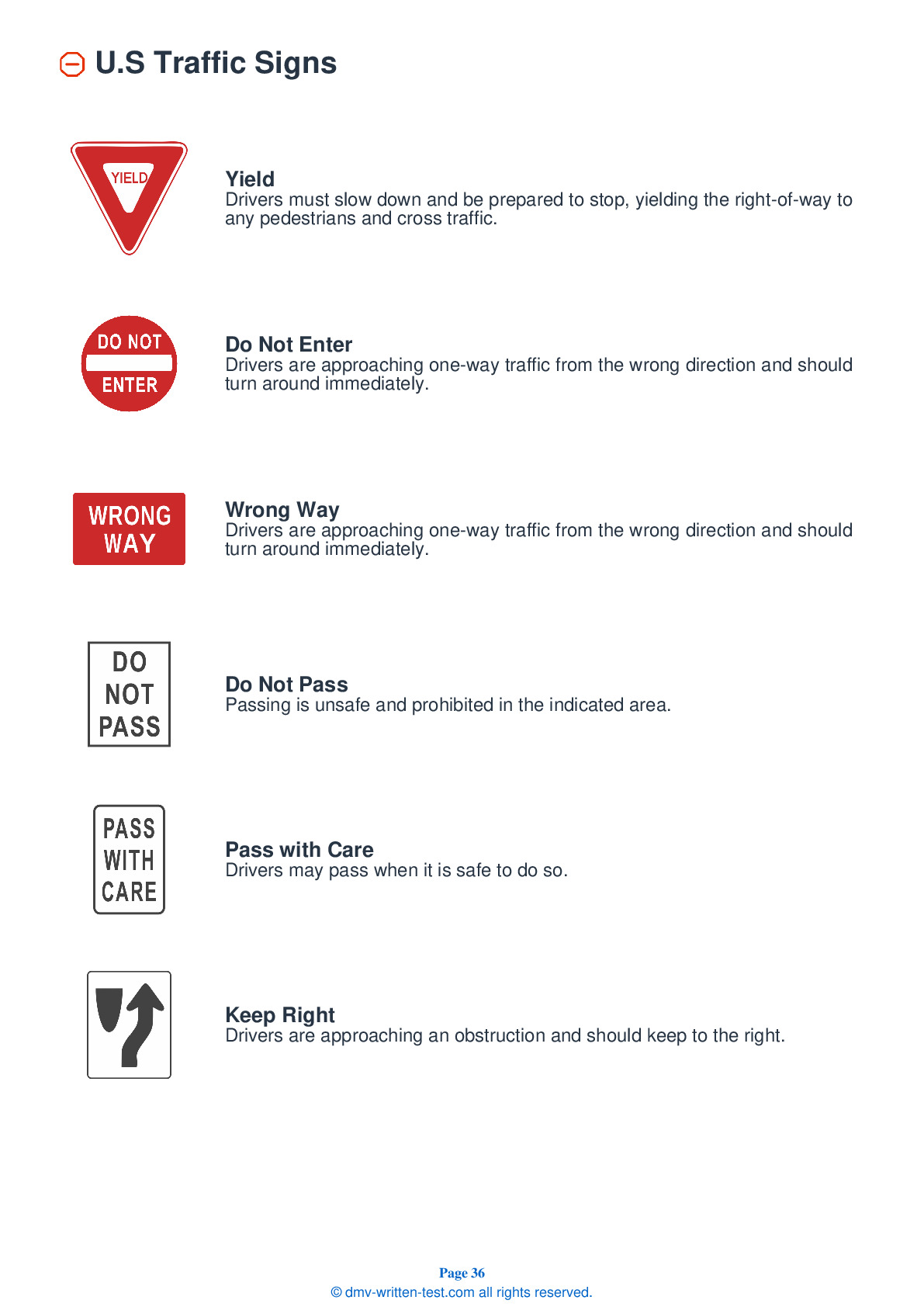2025 Vermont Motorcycle Permit Test 7
The following questions are from real DMV written motorcycle permit tests. These are some of the actual permit questions you will face in Vermont when getting your motorcycle learners permit. Each motorcycle theory practice test question has three answer choices. Select one answer for each question and select "grade this section." You can find this button at the bottom of the drivers license quiz. For a complete list of questions and answers for Vermont please visit https://cheat-sheets.dmv-written-test.com/en/vermont/motorcycle.
Number of Tests
Number of Question
Passing Score
19. If your motorcycle starts to wobble, you should:
Explanation
Do not try to accelerate out of a wobble because doing so will only make the motorcycle more unstable. Instead, grip the handlebars firmly, slow down by gradually closing the throttle, move your weight as far forward and downward as possible, and pull off the road as soon as you can. Avoid applying the brakes, as this may also worsen the wobble.
20. When selecting a helmet, make sure it is all of the following, except:
Explanation
You should select a helmet that meets U.S. Department of Transportation and state standards; fits snugly all the way around; and has no obvious defects, such as cracks, loose padding, or frayed straps.
21. When in traffic, motorcycles need:
Explanation
In traffic, a motorcycle needs as much distance to stop as a car does.
22. If you are hit by a wind blast caused by a passing vehicle, you will have the most room for error if you are riding:
Explanation
If you are in the middle portion of your lane, you will have the greatest room for error if your control is disrupted by a wind blast from a passing vehicle.
23. More than half of all crashes:
Explanation
Always take extra care when riding a new or unfamiliar motorcycle. Most crashes involve riders who have had less than six months of experience with the motorcycle that they are using.
24. When both braking and swerving must be done to avoid an unexpected hazard, a rider should:
Explanation
Because you need adequate traction to swerve safely, you should not brake and swerve at the same time. Instead, if you approach a hazard that requires you to brake and swerve, you should perform one action and then the other.
25. When riding under ideal conditions, you should maintain a minimum following distance of:
Explanation




